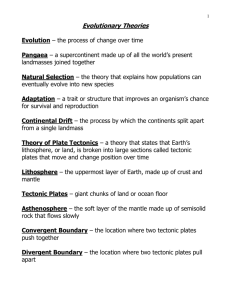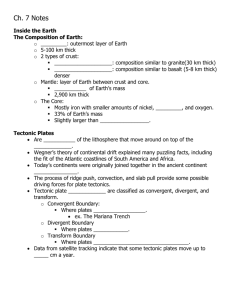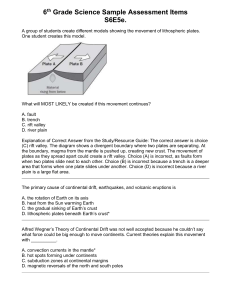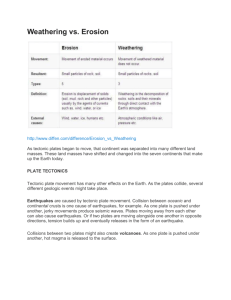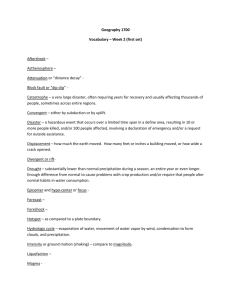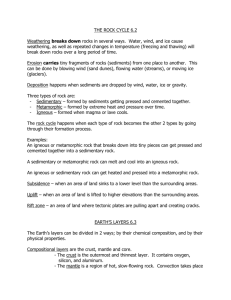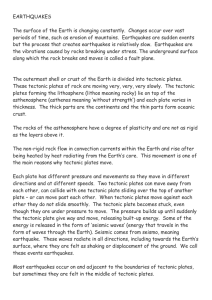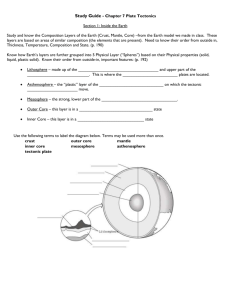6.2, 6.3, 6.4 Study Guide 1. Erosion is a process that slowly changes
advertisement
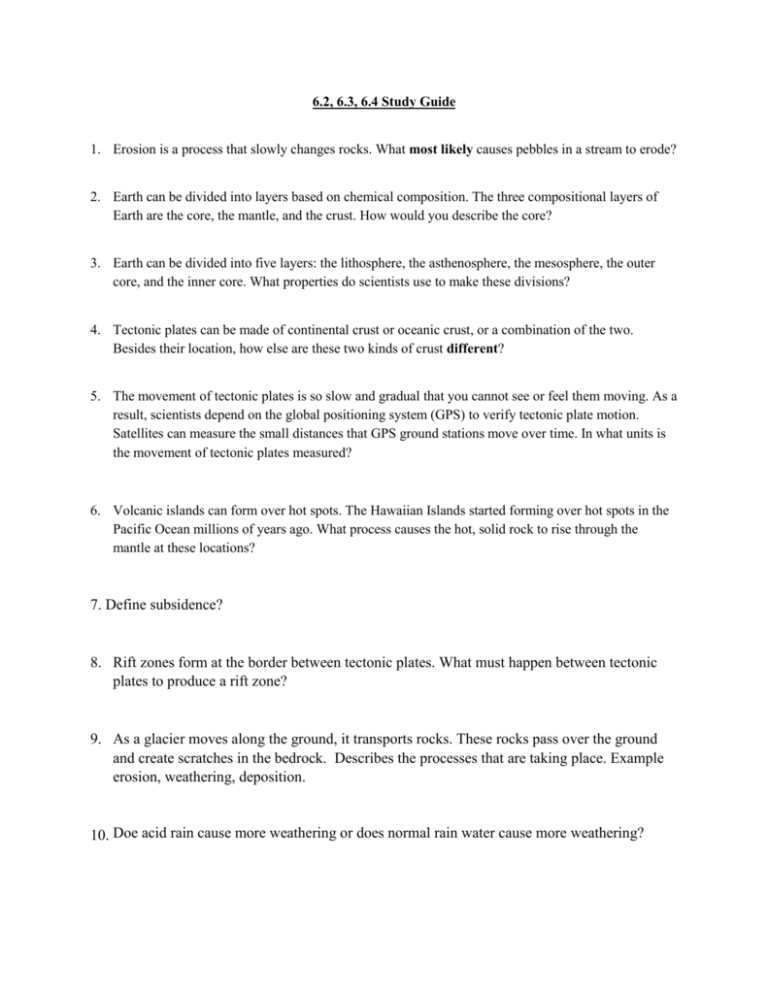
6.2, 6.3, 6.4 Study Guide 1. Erosion is a process that slowly changes rocks. What most likely causes pebbles in a stream to erode? 2. Earth can be divided into layers based on chemical composition. The three compositional layers of Earth are the core, the mantle, and the crust. How would you describe the core? 3. Earth can be divided into five layers: the lithosphere, the asthenosphere, the mesosphere, the outer core, and the inner core. What properties do scientists use to make these divisions? 4. Tectonic plates can be made of continental crust or oceanic crust, or a combination of the two. Besides their location, how else are these two kinds of crust different? 5. The movement of tectonic plates is so slow and gradual that you cannot see or feel them moving. As a result, scientists depend on the global positioning system (GPS) to verify tectonic plate motion. Satellites can measure the small distances that GPS ground stations move over time. In what units is the movement of tectonic plates measured? 6. Volcanic islands can form over hot spots. The Hawaiian Islands started forming over hot spots in the Pacific Ocean millions of years ago. What process causes the hot, solid rock to rise through the mantle at these locations? 7. Define subsidence? 8. Rift zones form at the border between tectonic plates. What must happen between tectonic plates to produce a rift zone? 9. As a glacier moves along the ground, it transports rocks. These rocks pass over the ground and create scratches in the bedrock. Describes the processes that are taking place. Example erosion, weathering, deposition. 10. Doe acid rain cause more weathering or does normal rain water cause more weathering? 11. Over a long period of time, igneous rock can change into sedimentary rock. What must happen to igneous rock before it can change into sedimentary rock? 12. Scientists think the continents once formed a large, single landmass that broke apart, and the continents slowly drifted to their present locations. What is the name given to this hypothesis? 13. Florida is not close to the edge of a tectonic plate. Therefore, which one of the following features does not exist in or beneath Florida? 14. The Red Sea formed as the African Plate moved apart from the Arabian Plate. Which type of boundary was involved in the formation of the Red Sea? 15. The Rocky Mountains formed when the Pacific plate collided with the North American plate. Which of the following terms describes this process? 16. What are the mechanisms that have been proposed to explain the movement of Earth’s tectonic plates? 17. What happens at a divergent tectonic plate boundary? 18-20. Label each compositional layer that is shown in the illustration below. A. B. C.

